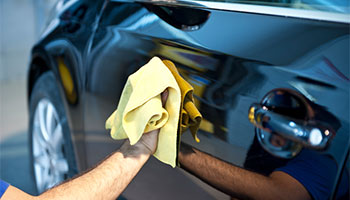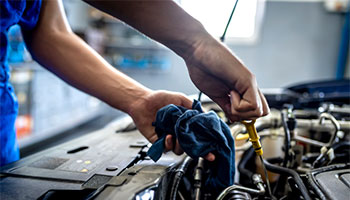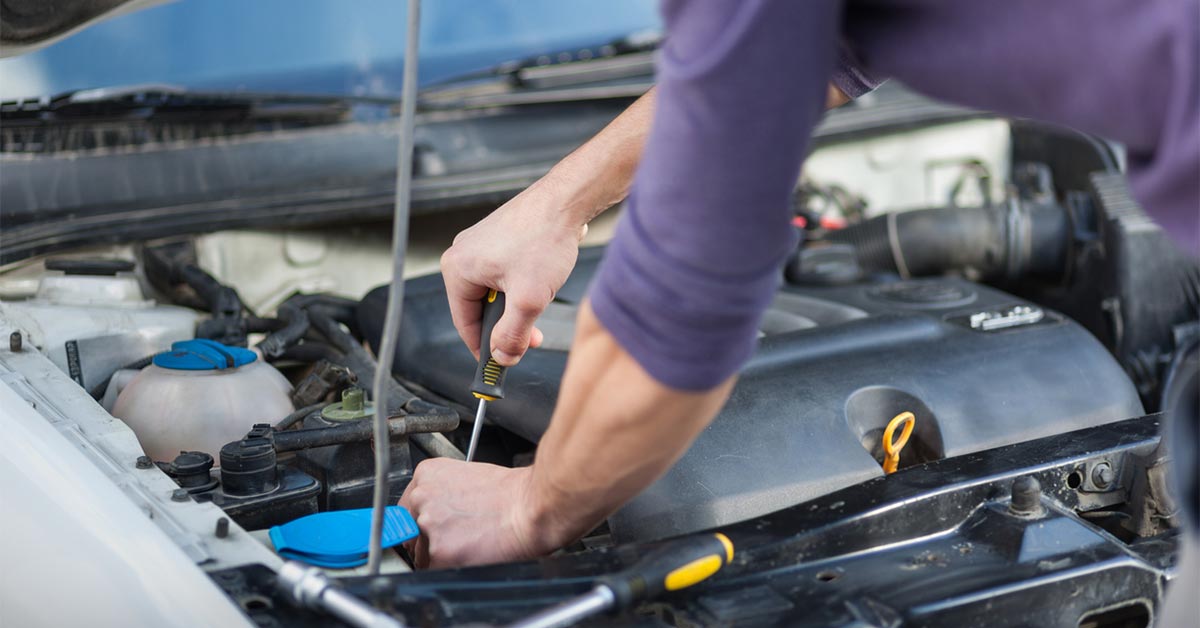For car enthusiasts, summer usually means extended road trips and highway cruising. However, despite all the fun, it’s easy to forget that excessive sun exposure and heat can damage your vehicle. Plus, we all know it’s no fun to enter a car that’s been sitting directly in the sun for hours. Although your car won’t immediately break down because the weather is a little warm, taking a few precautions can help prevent paint and interior damage over time. So, whether it’s practicing good parking habits or simply utilizing the right products, here are five tips on how to protect your car from sun damage.
How to Protect Your Car from Sun Damage
Excessive sun exposure can damage your car’s paint and interior. Luckily, some routine car maintenance and good parking habits can help prevent most issues.
1. Keep Your Car Clean

Regularly washing your car keeps it looking its best, but it can also help protect your car’s paint and exterior surface.
As you drive, it’s normal for debris, dirt, and even bugs to get stuck on the outside of your car. If not maintained, the dirt and bugs can slowly react with the sun’s heat and cause your paint to change. Additionally, as bugs decompose, they release acidic fluids that can further damage your car’s paint. Consider washing your car frequently to prevent sun damage from grime build-up, especially during hot months.
2. Don’t Forget to Apply a Wax Coat
Washing your car will help remove grime from its surface but won’t provide lasting protection against sun damage. That’s why applying a wax coat to a car’s exterior surface is essential. The main benefit of wax is that it adds an additional layer of defense to your car’s paint job to shield it against minor scratches and UV rays. Applying a layer of wax also makes it easier to remove messy debris, such as tree sap, bird droppings, and bug splatter.
If you plan to wax your vehicle, remember to always clean your car before applying the wax. Failing to do so may grind matter into the paintwork during the application process. As a general rule of thumb, consider waxing your car at least two times a year. However, those who experience harsher weather conditions may benefit from waxing every three to four months.
What about spray-on wax at self-service car washes? Spray-on wax is an affordable, quick way of adding a thin layer of protection to your car. However, although spray-on wax can make your car shine in a pinch, it doesn’t provide as much protection when compared to paste wax that is applied by hand. Still, most experts agree that spray wax is better than no wax. For optimal results, consider having your car professionally cleaned and waxed at least once a year between self-service car washes.
3. Check Under the Hood as Well

Hot weather can further increase the temperatures inside your car’s engine, forcing it to work harder. For example, motor oil thins at high temperatures which can increase friction and engine heat. If you live in an area prone to extremely hot weather, you can prevent this by getting an oil change with higher viscosity oil before summer.
As summer approaches, you should also pay close attention to your car’s coolant levels. Coolant fluid protects car engines from overheating, so running on old or low coolant could lead to a mechanical breakdown. You can identify a coolant issue if your car’s temperature gauge consistently shows a high reading. Most manufacturers recommend changing your coolant every 30,000 to 50,000 miles. However, always refer to your owner’s manual for specific intervals.
The summer months can also cause strain on your car’s battery. In high heat, the fluids inside your battery can begin to evaporate slowly, limiting the amount of charge the battery can hold. So before heading out on an extended trip this summer, have your battery serviced and cleaned to prevent start-up issues.
4. Shield Your Car’s Interior from the Sun

Don’t forget about your car’s interior when protecting it from sun damage. Just like paint, a car’s dashboard, steering wheel, and upholstery can all suffer from excessive sun and UV exposure—especially leather. If you must park in direct sunlight during a hot summer day, utilizing a windshield shade is a quick and easy way to add a layer of sun protection. Plus, it’ll also help keep the temperature in your car from getting too hot.
Suppose you don’t plan on using a vehicle during summer but don’t have a garage for storage. In that case, you can purchase a car cover to keep the vehicle out of direct sunlight.
5. Practice Good Parking Habits
No matter what defensive measures you take, keeping your vehicle out of the sun is the easiest way to prevent sun damage. Although one sunny day won’t cause your paint to fade, practicing good parking habits such as parking in the shade, covering your car, or utilizing a garage will all extend the life of your car’s paint job.
Does Car Insurance Cover Sun Damage?
Unfortunately, your car insurance will likely not cover sun damage. Because sun damage occurs slowly over time and not in an isolated incident, it is considered normal wear and tear, which isn’t typically covered. However, if you carry comprehensive coverage and your car’s exterior is damaged in a severe weather event or storm, your insurer may approve your claim. Additionally, if your car overheats and breaks down on the highway, carrying roadside assistance will help get you the mechanical help you need.
Want to learn more about car maintenance projects that you can do at home? Visit the DIY section of our blog to discover more articles on how to keep your car looking—and performing—its best.
The information in this article is obtained from various sources and is offered for educational purposes. Furthermore, it should not replace manuals or instructions provided by the manufacturer or the advice of a qualified professional. No warranty or appropriateness for a specific purpose is expressed or implied.


